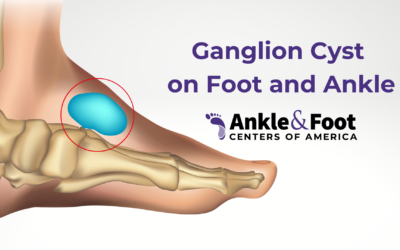Chronic ankle instability is a condition that is caused by repetitive trauma to the outer-side of one’s ankle leading to intense pain, weakness in the ankle, swelling, and discomfort. This is also known as lateral ankle instability.
What are the causes of chronic ankle instability?
The most common cause of chronic ankle instability is repeated ankle sprains. An ankle sprain is caused by the ligaments and tendons in your ankle being stretched past their normal range of motion. These ligaments are what stabilizes the ankle. Each new ankle sprain can make the instability in an ankle heighten, becoming more weak. Ankle Sprains or other ankle injuries that have not healed properly or did not get the correct treatment, can also lead to chronic ankle instability.
Some other conditions possible of causing chronic ankle instability are: ankle fractures, scar tissue in the ankle, or arthritis in the ankle. These can all take place by something simple, like stepping on uneven ground, or by vigorous activity like participating in sports.
How is Chronic Ankle Instability Diagnosed?
 A podiatrist (an ankle and foot specialist) will be able to diagnose you through a physical exam, a balance test, or something more advanced like an X-Ray or MRI. Your doctor will also look through your medical history, looking for any other injuries that you may have had in the past.
A podiatrist (an ankle and foot specialist) will be able to diagnose you through a physical exam, a balance test, or something more advanced like an X-Ray or MRI. Your doctor will also look through your medical history, looking for any other injuries that you may have had in the past.
Non- Surgical Treatments for Chronic Ankle Instability
Based on the severity on your condition you may be able to partake in non-surgical treatments recommended by your podiatrist such as:
- Prescribed medication to reduce some of the pain and inflammation that is taking place in the ankle.
- Wearing an ankle brace or ankle tape to help regain support in the ankle and to prevent further sprains from happening.
- Going to physical therapy to help strengthen the ankle, improve balance, and regain range of motion in the ankle.
Typically, chronic ankle instability will initially be treated with these non-operative treatments before looking into any surgical options.
Surgical Treatments for Chronic Ankle Instability
For patients with more severe cases of chronic ankle instability, who have not shown any progress through non-operative treatment, your podiatrist may recommend surgery. There are a few types of procedures for this condition, some simple repairs and other full ankle reconstructions. Your surgeon will pick the best procedure for your issue.
Types of Surgeries:
Anatomic repairs reconstruct the ankle anatomy by overlaying and tightening the existing ligaments.
Lateral ankle ligament reconstruction, also known as the Brostrom Repair, is the main example of an anatomic technique. Before the procedure you will be given general anesthesia or numbing anesthesia. This procedure consists of making a small cut on the outside of your ankle and then tightening those ligaments. They typically do this by cutting the ligaments shorter and then reattaching them with sutures through holes in the fibula (ankle) bone. This solves any deformities or weakness in the ankle.
Non-anatomic repairs use grafts or tendons to reconstruct the ankle anatomy and tighten the ankle.
Peroneal Substitution Reconstruction is an example of a non-anatomic procedure where the ligament is completely replaced with a new piece of tendon from the ankle. This is not considered the most ideal procedure, but it is necessary if the tissue has been too damaged for an anatomic technique. The Peroneal Substitution requires a larger incision and maybe have a longer recovery period.
Another example of a non-anatomically technique is the “InternalBrace” technique, which is a newer, more innovative procedure that provides additional fixed layer to the ligament. Therefore this extra layer helps with the healing process of ligament to bone. It is the same as the Brostrom procedure with an additional step of placing a stress-resistant band over the ligament for a quicker recovery. “Artelon Graft” is another newer technique that uses a stress- resistant flexible band to help the recovery of the Brostrom Repair to go quicker than ever before.
Other surgical procedures may include removing loose fragments or cleaning the joint surface.
Your podiatrist will be able to provide you with the correct treatment plan needed to help with your case of chronic ankle instability.
What to expect Post- Op
When waking up from anesthesia your ankle will be in a splint, and you may experience some pain for the first few days after surgery. Your podiatrist will provide post-op instructions which will include prescription and wound care details. You will want to be sure to keep your leg elevated and keep weight off of it for 2 weeks. You will return to get your stitches taken out about 2 weeks after surgery. Once the stitches have been removed and you have started to heal, your doctor may recommend physical therapy to strengthen your muscles again.
Just like any other surgery, if you experiences complications or odd side effects such as chills, unbearable pain, or a fever you should contact your provider immediately.
Conclusion
Chronic ankle instability or lateral ankle instability is a condition that is caused by repetitive trauma to the ankle. The most common cause of this being repetitive ankle sprains. It is recommended you see your local foot doctor if you believe you may be experiencing the symptoms of chronic ankle instability. They will be able to guide you to a treatment plan that will be best the fit for you.





